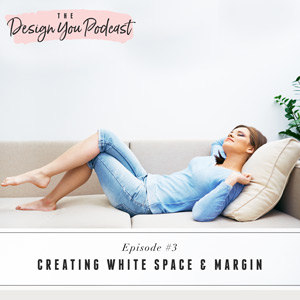
On last week’s episode of The Design You Podcast, we talked about how to start saying no to busy and how that allows us the space to rethink our business, open our mind, and decide what fits into our 24-hours. Since I’ve been utilizing this approach to creating my life on purpose, “busy” just doesn’t have a place in my vocabulary anymore. Instead, I use words like “white space” and “margin.” Words and practices that actually bring me joy.
White space and margin allow space for things to happen. They’re intentional components of balance and quality of life. They turn guilty pleasures into Tobi-approved activities that I now see as important for me and my relationships! Intrigued? Today, I share what these terms mean and how they’re the keys to creating a life and business you love.
Learn how planning for space in your day can take you from uber-busy to someone who can sit without losing their mind… and help you be even more productive. I’m also sharing some ideas on how to use that newly freed-up time as a way to experience a more colorful and joyful life!
If you would like to know the exact steps I took to start making changes in my own life, sign up for my Design You Blueprint, a plan for helping you design a life with more health, wealth, and joy.












